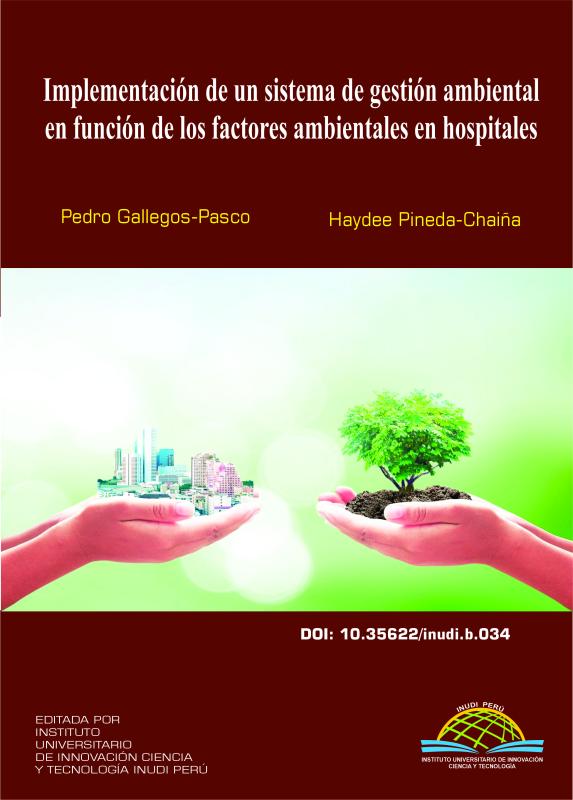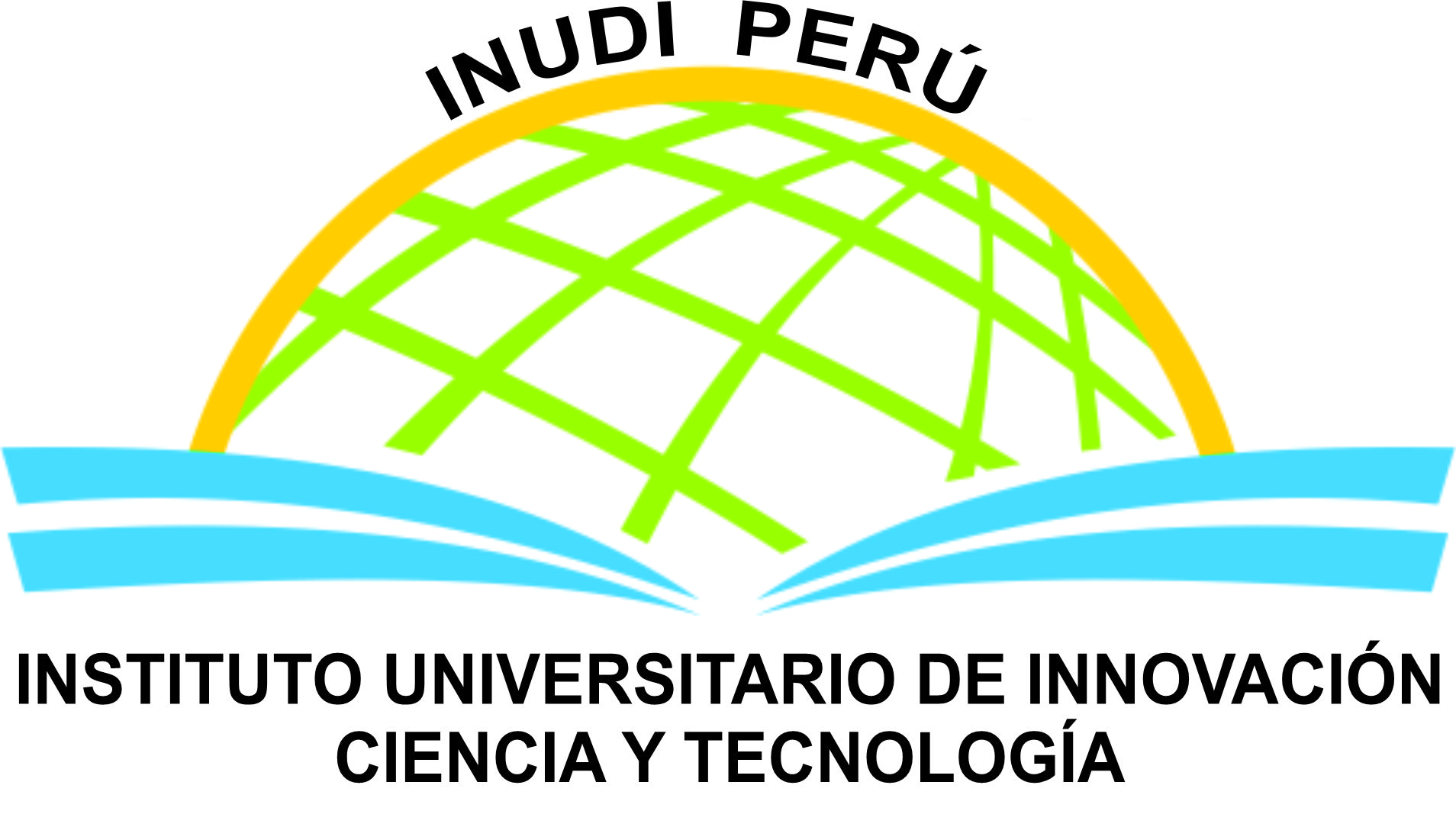Implementation of an environmental management system based on environmental factors in hospitals
Keywords:
sterilization, environmental factors, furans, environmental management, solid wasteSynopsis
This book is an adaptation of a study presented to the National University of the Altiplano, which aimed to implement an environmental management system to manage Water, Air and Soil resources, develop environmental review, and identify Environmental Management programs at Manuel Núñez Butrón Hospital in Puno (Peru). In addition to defining all the elements of the International standard: Environmental Policy, identification of environmental aspects, highlighting hospital solid waste, identification of legal requirements, establishment of environmental objectives and goals, availability of resources, functions and responsibilities, authority, competence, training and awareness, communication, documentation, document control, operational control, emergency preparedness and response, monitoring and measurement, evaluation of legal compliance, non-conformities, corrective action and preventive action, control of records, internal audit and review by the address. The methodological process establishes the necessary elements for the design of an Environmental Management System, where the methodology established in the International Standard ISO 14001 is applied, with which it is expected to improve the quality of care, quality of service, health and environmental performance, by controlling the aspects and tasks that cause or could cause negative impacts to the Hospital environment. Identification and assessment of significant environmental aspects and impacts, the information was taken through average weight measurements, generation of Solid Waste. Finally, the Manual of the Environmental Management System for the Hospital was prepared to conduct its activities in a positive way towards the environment, patients and people in general. It also provides the necessary information for its implementation. The results indicate that the sterilization of solid waste reaches the conclusion; the analysis of variance (ANOVA), after sterilization, shows a calculated "F" value of 585.89, this being higher than the critical value of 1.85, showing that the means or averages are different and significant for the value of 0.000, the Pearson's R Correlation Test shows a value of 0.996 which indicates a direct and almost perfect relationship and the "t" test shows significant differences between the means whose reduction is 0.86083, on average by day, it is concluded that sterilization significantly improves the management of environmental factors in the operating room area of said hospital.
References
Angel Mayo, A. (2001). Física, Filosofía y Medio Ambiente, Gestión y Ambiente. Colombia: Universidad Nacional de Colombia. Vol. 4 pp.7-86.
Boehm, R. (1987) Design Analysis of thermal systems, (First Edition) USA: Wiley & Sons.
Brown, S., Kjollesdal. D. & Lee, M. (1992) Protecting Commnity Health. Canadá.
Bunge, M. (1983) La Investigación Científica. México: Ariel.
Bustos, F. (2001). Sistemas de Gestión Ambiental y Estudios Ambientales. Ecuador: Universidad Central.
Brunner C. (1991) Handbook of incineration systems, USA: McGraw Hill.
Camacho, A. & Liliana A. (2000). Diccionario de Términos Ambientales. La Habana: Centro Félix Varela.
Cantanhede, A. (2007) Composición de los residuos de los servicios de salud.
Cao E. (2004) Transferencia de calor en Ingeniería de Procesos, (1ra. edición) Argentina: Editorial Argentina.
Cárdenas, A. (2005). La Economía Ecológica como ciencia del Desarrollo Sostenible. Fundación General. España: Universidad Autónoma de Madrid. pp. 32-39.
Cascio, J. (2000) Guía ISO 14000. Las Nuevas Normas Internacionales. México: Editorial McGraw Hill.
CEPIS (1996) Guía en manejo interno de residuos sólidos en centros de atención de salud. Lima.
Day, R. (1995) Como escribir y publicar Trabajos Científicos. Estados Unidos: The Org. Press.
Díaz B. (2010) Estadística. Lima: UNI.
DIGESA - MINSA (1996) Programa de Fortalecimiento de Servicios de Salud. Lima.
Dunn O. & J. Virginia (1974). Applied statics: Analysis of variance and Regression. John Wiley and sons. New York. London, Sydney. Toronto.
Espinoza, G. (2002) Gestión y fundamentos de evaluación de Impacto Ambiental. Santiago – Chile.
Gallardo, J. (1989) Formulación y Evaluación de Proyectos. México: Mc Graw Hill.
Gallegos Pasco, P. (2005) Implementación de un Sistema de Gestión Ambiental para mejorar la Calidad de vida en la Municipalidad Alto de la Alianza (tesis inédita de maestría). Tacna: Universidad Nacional Jorge Basadre Grohoman. Tacna
Gallopin, G. (1980). El Medio Ambiente humano; En: Estilos de desarrollo y medio ambiente de América Latina. México: Fondo de Cultura. Economía.
Gómez, F. (1999) Como hacer Manual Medio Ambiental de la Empresa. Madrid: Cofemetal.
Hahn E. (1994) La Reestructuración Urbana Ecológica. Madrid: Estudios Territoriales.
Herber, A., Raymond, R. & Colton. (1966). Statical Methods. New York: Barnes.
Hernández Sampieri, R. (2001) Metodología de la Investigación. México: Mc Graw Hill.
Incropera F. (1999). Fundamentos de Transferencia de Calor. (4ta. Edición) México: Prentice Hall.
Jaramillo, J. (2003) Centro Panamericano de Ingeniería Sanitaria y Ciencias del Ambiente. Medellín - Colombia: Universidad de Antioquía.
Martinez J. (2005) Guía para la Gestión Integral de Residuos Peligrosos, (1ra. edición) Uruguay: Centro de Convenios de Brasilea para América Latina y el Caribe.
Mateo, J. (2004). El medio ambiente y la sostenibilidad ambiental urbana desde perspectiva espacial. Manizales: Revista de Arquitectura, Universidad Nacional de Colombia.
Monreal, J. (1991) Consideraciones sobre el manejo de Residuos Hospitalarios en América Latina, Washington: OPS.
Myers, W. Raymond, H. & Myers. (1992). Probabilidad y Estadística. (4ta. Edition). México: McGraw Hill.
PCDD/F (2000) Prevention by novel inhibitors: adition of inorganic S- y N-compounds in the fuel before combustión.
Quezada, L. (2010) Metodología de la Investigación Científica. México: Macro.
Sabina, C. (1992) El Proceso de Investigación Científica. Caracas.
Sakurai, K. (1983) Aspectos básicos del servicio de aseo. Análisis de residuos sólidos. Programa Regional OPS/EHP/CEPIS de mejoramiento de la recolección, transporte y disposición final de residuos sólido. Lima: CEPIS.
Tamayo y Tamayo, M. (1995) Metodología Formal de la Investigación Científica. México: Limusa.
Tello, P. (1991) Diagnóstico de la Situación de residuos sólidos Hospitalarios en Lima Metropolitana. Lima.
Toledo M. & Matute P. Tema de Graduación. Definiciones de Factores Homogéneos y Heterogéneos para la medición de la calidad de los servicios hospitalarios por nivel socioeconómico en Guayaquil. Guayaquil: Escuela Superior Politécnica.
U.S. Patent 5.514.356 System for the prevention of dioxin formation in combustión flue gases, (1996)
U.S. Patent 5.968.467 Dioxin formation preventative in incinarators and method for preventing the formation of dioxins, (1999)
Walpole E., Raymond. R. & Myres H. (1993). Probability and statistics for engineer and scientists firth edition, Prentice Hall, Inc.

















